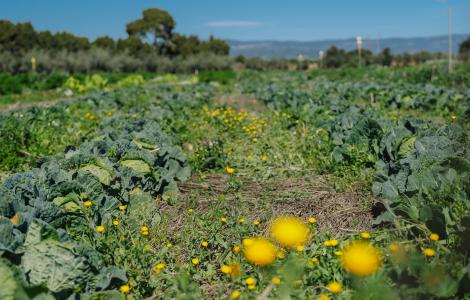Butterflies face greater risk of extinction at higher latitudes
20 years of data accumulated by the Butterfly Monitoring Schemes of the United Kingdom and Catalonia have served to demonstrate that butterflies which live at higher latitudes suffer more ups and downs in population size.

The scientific journal Ecography has just published an article with coauthors Constantí Stefanescu and Ferran Páramo, researchers of the Museum of Natural Sciences of Granollers, and the first of which is also an associate researcher of CREAF. The results indicate that butterfly population sizes fluctuate differently depending on the latitude in which they live.
In high latitudes, such as in the British Isles, populations of butterflies experience more drastic ups and downs than in lower latitudes, such as those of Catalonia. “Ecologists know that when the size of a population is very instable there is more risk of extinction, and for that reason the results of this study also indicate that in the high latitudes there is more probability that some species may go extinct,” says Constanti Stefanescu.
The work is fruit of a collaboration between English and Catalonian scientists, based on exploration of data from monitoring projects of English (ukBMS) and Catalonian (cBMS) butterflies. The work is based on analysis of data gathered over 20 years within the framework of the two projects and including around 30 butterfly species present both in Catalonia and the British Isles.
Temperature and biodiversity of the landscape are key to assure the survival of butterflies.
Intense fluctuations are related to the climate of the high latitudes, which are cold and unfavorable for these insects which require the sun for thermoregulation. “This idea is confirmed by another analysis with data from the ukBMS which demonstrated that in the British Isles, over the last thirty years, fluctuations in butterfly population size have diminished due to the increase in temperatures associated with climate change,” affirms Constantí Stefanescu.
The study demonstrates that landscape structure also helps to explain the population size fluctuations.
It was observed that when landscape structure is very diverse, both in terms of types of environments as well as the complexity of terrain, populations fluctuate less. This result has important implications for conservation biology, indicating the necessity for protecting the mosaic nature of landscapes and avoid their uniformization (which occurs, for example, as a consequence of the expansion of intensive agriculture or of forest masses). This also demonstrates the importance of conserving complex landscapes in mountainous areas where, thanks to the existence of varied microclimates, butterflies can find various refuges when climatic conditions are extreme. This is especially important in the Mediterranean, where the predictions for climate change point to greater drought frequency, with consequent negative effects for plants and animals.
Researchers from the NERC Centre for Ecology & Hydrology and Butterfly Conservation also participated in the study.
Article
Oliver, T.H., Stefanescu, C., Paramo, F., Brereton, T. and Roy, D.B. 2014. Latitudinal gradients in butterfly population variability are influenced by landscape heterogeneity.Ecography, 37: 863–871, 2014
CREAFlash (in catalan)







